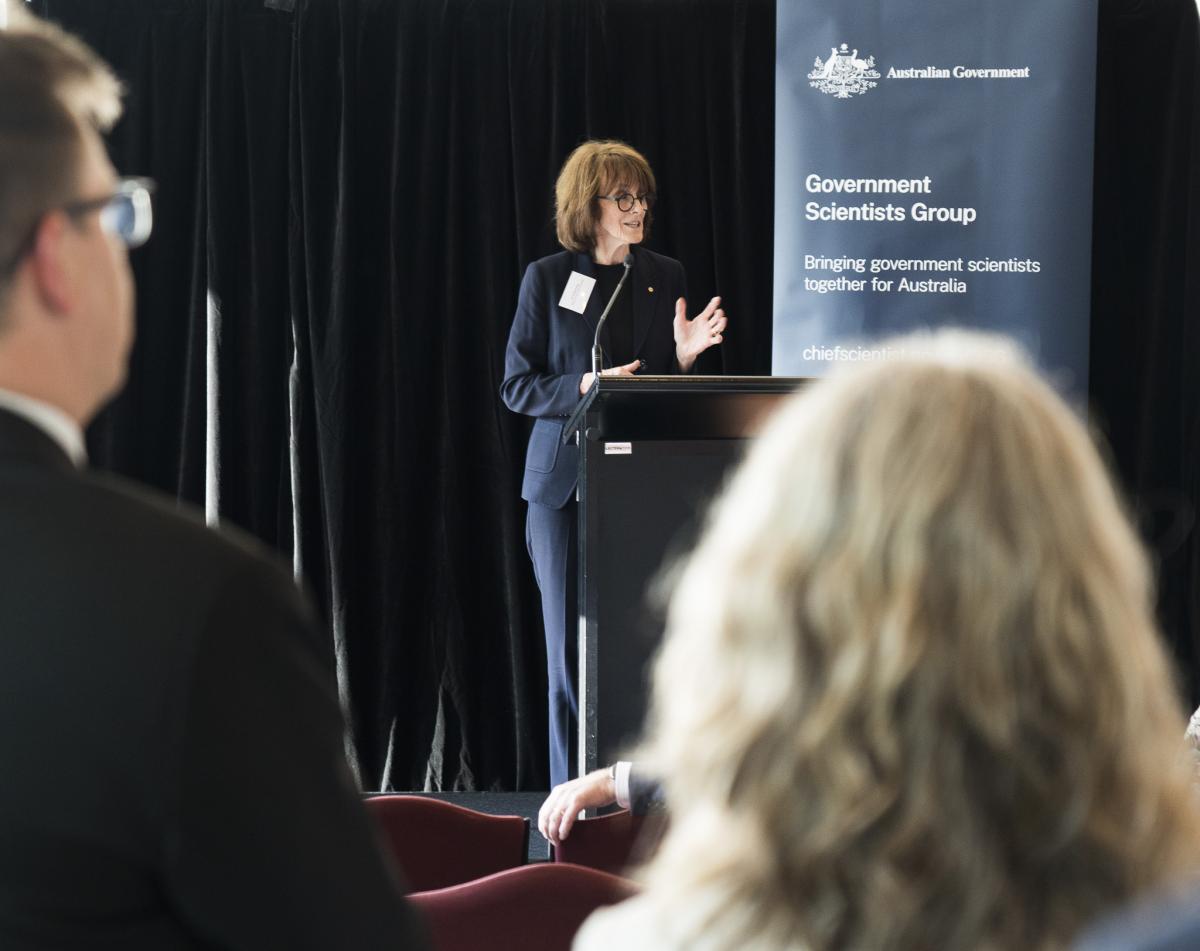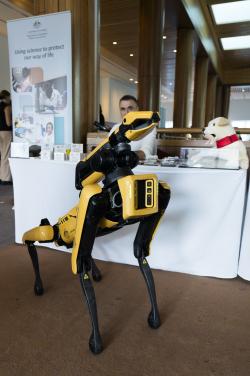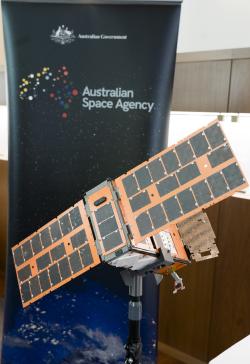Parliamentary Friends of Science Government Scientists Group showcase

It’s fantastic to see you all here. Thank you for coming tonight.
I know Parliament House is no stranger to momentous events – this building is always buzzing with activity that is crucial to the future of the nation. But I think we can lay claim to the most exciting display of science here in the Mural Hall in a long time – maybe ever.
You probably remember when Aida, a humanoid robot powered by AI, gave evidence to the UK parliament 18 months ago. Tonight, we go one better. We have Spot, the biosecurity robot! For that, we thank the Department of Agriculture, Forestry and Fisheries, which brought Spot here to the Mural Hall tonight. Spot represents the future of biosecurity. Automated checks on potentially hazardous containers, being developed by scientists in DAFF, bring a step-up in keeping pests and other invasive species out of Australia. It is great to have Adam Fennessy, the DAFF Secretary, and Dr Gabrielle Vivian-Smith, the Australian Plant Protection Officer, join us.
Don’t ask Spot to sit – he’s operated by remote control. But science is moving fast in the area of AI and automaton – automation is one of our strengths in Australia. So perhaps it won’t be long before we all have our own Spot in the living room. That’s just one of the exhibits tonight.
I won’t try to talk about them all. Shortly you’ll have time to explore for yourself. I had I planned to delight you with some quantum physics in action. I commandeered liquid nitrogen from the ANU for my superconducting display of magnetic levitation in action, which I think might have caused some consternation. I wasn’t allowed it in the budling, so full marks to Parliament House security! You’ll have to come and visit me tomorrow if you’d like the demo.
You can tell I’m in my element. But this event is not just about fun with science. It has a serious purpose and message – and that is to elevate recognition of science capability and expertise across government.
When I set up the Government Scientists Group when I became Australia’s Chief Scientist in 2021, it was because I was convinced that if we could bring all of the science capability together, we’d be better off. We’d have better awareness of what each other was doing; we could share expertise, collaborate when useful, and really leverage our strengths to greater impact.
I’m sure the parliamentarians among you are well aware of the expertise in particular agencies and portfolios – and will’ve had reasons to call on it. What I hope to do through the GSG is demonstrate breadth as well as depth. I hope it will build understanding of the work that’s happening in different sectors and portfolios.
Since Federation, the Australian Government has called on science to progress the nation’s prosperity. The oldest agency in the GSG is the Bureau of Statistics, established in 1905 to count people and start crunching the numbers for the newly federated nation. It’s great to have Professor Anders Holmberg, the Chief Methodologist from the ABS here.
The next year, we set up the Bureau of Meteorology. Their work has always been critical for Australia – and clearly remains so. Dr Andrew Johnston, the Director of Meteorology, and Dr Gilbert Brunet, their Chief Scientist are here also.
In 1910, Geoscience Australia was set up as we realised how much of our life force comes from the land. Dr James Johnson, their CEO, and Dr Steve Hill, their Chief Scientists are with us tonight.
And then, as introduced species such as the prickly pear started impacting agriculture, the CSIRO was established, and I’m pleased to see the new CEO, Dr Doug Hilton, join us, along with others from the CSIRO.
After the disappointment about our 1976 Montreal Olympics medal performance, Australia established the Australian Institute of Sport in 1981. Kieren Perkins, CEO of the Australian Sports Commission, is here tonight, as is Dr Paolo Menaspa, their Chief Science Officer.
After the war, came Defence Science and Technology, and then ANSTO with the nuclear age, and the youngest agency with the space age. The Australian Space Agency was established only about 6 years ago.
Each of these agencies was set up to address a national need or solve a national challenge. As a result, there is tremendous breadth and depth of scientific endeavour taking place across the Australian Government. The scientists, researchers and regulators in the agencies undertake and use highly impactful, world-class research. They regulate Australia’s industries and standards. They also contribute to international science diplomacy and regulatory operations.
You can find out more about in the booklet that we’ve produced, which sets out the science in every one of the 24 agencies – there are some hard copies on the registration desk, and a postcard there with a QR code so you can access it online.
Everyone is touched every day by the work of these agencies. Every person in Australia in their lifetime will benefit from nuclear medicine – and take medicines approved by the TGA. Everyone benefits from black-boxes on aeroplanes. Wi-fi and Aerogard, which were invented by CSIRO, are part of all our lives.
This science capability is an enduring capability that the Government can call on as unexpected challenges arise. The people who work in these agencies are here to deliver on the Government’s priorities. In this way, their jobs are different from those who work in the university sector. For many, their work for government is a long-term career commitment.
Honestly, when I envisaged this event, I’m not sure I quite knew what to expect. It’s thanks to the efforts of all the agencies here tonight that we have such great representation. Thank you for your enthusiasm and your efforts to ensure such a high level of attendees. Parliamentarians, please reach out and get to know your STEM support team.
The people in this room represent the hidden gem of Australian public service. And that’s something we should all recognise and be proud of.
I’d now like to introduce the speakers. We’re going to hear briefly from 3 GSG representatives tonight. First, Dr Kyle Jones, who is the Principal Forensic Scientist with the Australian Federal Police. Then Mr Shaun Jenkinson. He’s the Chief Executive Officer of ANSTO, the Australian Nuclear Science and Technology Organisation. And finally, Dr Cheryl McCrae, from the Department of Health and Aged Care, who represents the Therapeutic Goods Administration.


